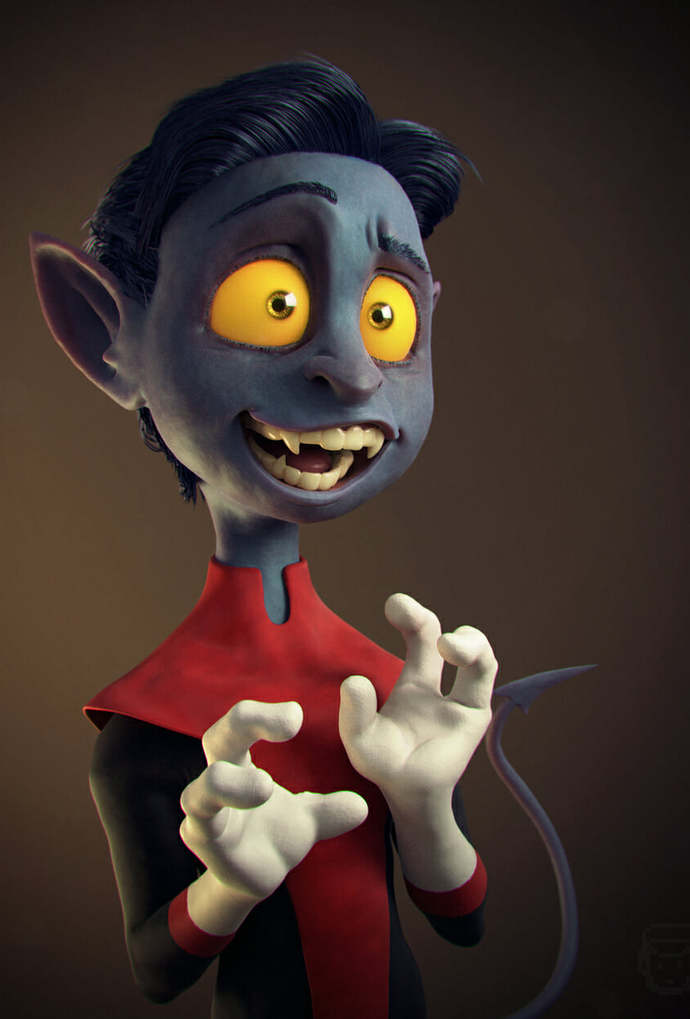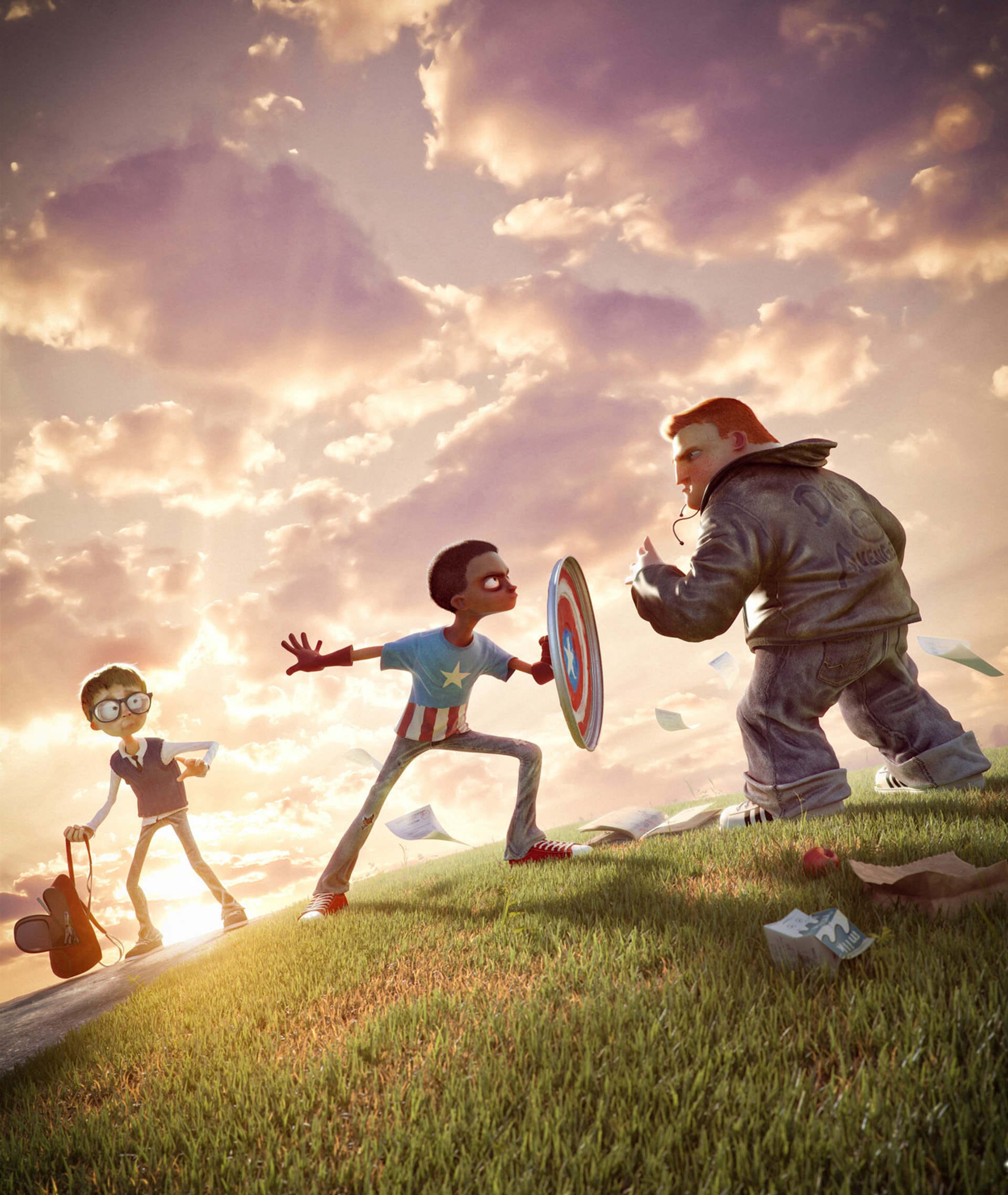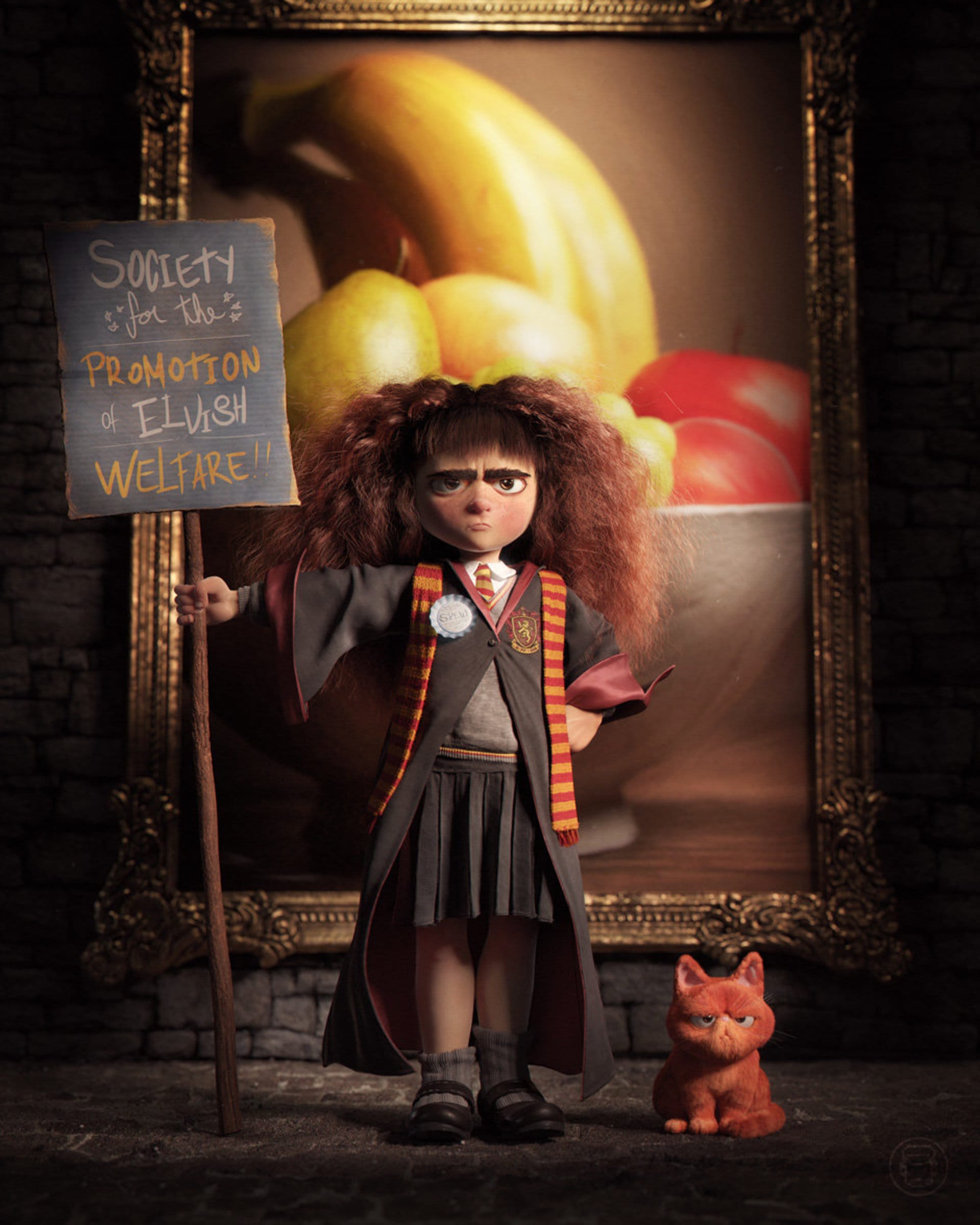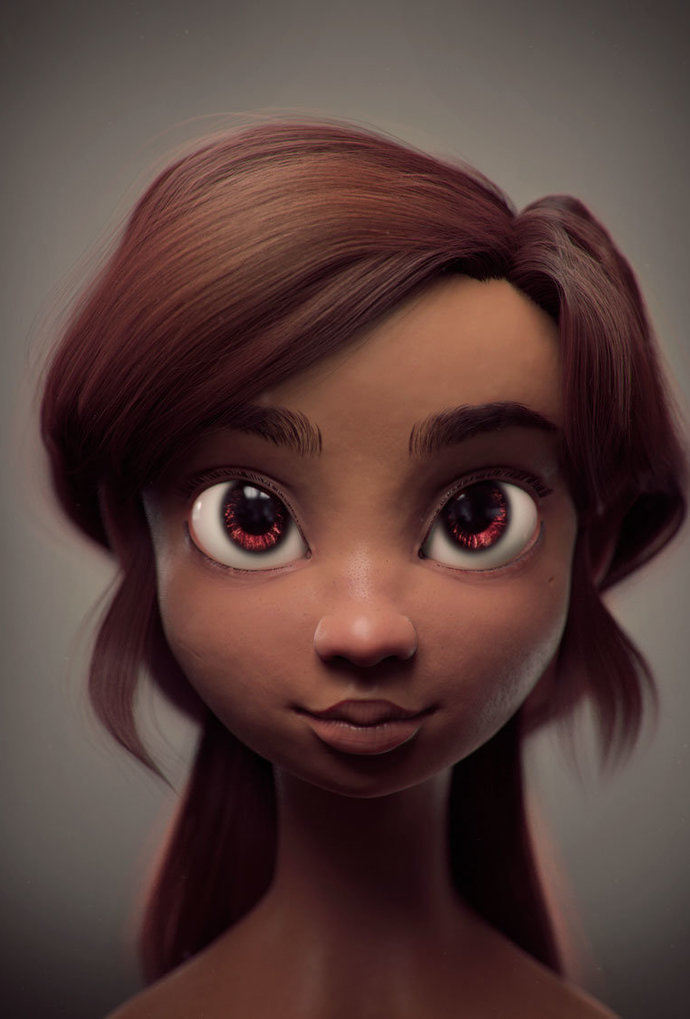 Digital Canvas: A Conversation with Victor Hugo Queiroz
Digital Canvas: A Conversation with Victor Hugo Queiroz
Photorealism and cartoony stylization meet in this talented Brazilian artist’s work.
After spending a long time working for studios in his homeland of Brazil, Victor Hugo Queiroz is pursuing a freelance career as a 3D artist / CG Generalist. The 28-year-old artistic talent is a strong believer in the idea that “Everyone has something to learn. Everyone has something to teach.” Recently, Trevor Hogg had a chat with Victor where they discussed his background, creative process, photorealism versus stylized animation, and his fascination with a certain superhero who struggled with his newly acquired powers…
“My mother was a great illustrator as a teenager but unfortunately she didn’t develop her skills,” notes Victor Hugo Queiroz who comes from a family of engineers and accountants. “My first contact with a 3D program happened when I was 13 years old. My dad gave me a 3ds Max trial version to ‘start creating those things you play on video games.’” The native of Sao Paulo, Brazil received no formal training when it came to creating 3D art. “In my opinion, a great illustration is the one that you can’t exactly define which technique was applied, whether it’s 2D or 3D digital, or traditional. It’s just pleasant to the eye.”
ZBrush, 3ds Max, Photoshop, and V-Ray are the digital tools of choice for Victor.
After spending a long time working for studios in his homeland of Brazil, Victor Hugo Queiroz is pursuing a freelance career as a 3D artist / CG Generalist. The 28-year-old artistic talent is a strong believer in the idea that “Everyone has something to learn. Everyone has something to teach.” Recently, Trevor Hogg had a chat with Victor where they discussed his background, creative process, photorealism versus stylized animation, and his fascination with a certain superhero who struggled with his newly acquired powers…
“My mother was a great illustrator as a teenager but unfortunately she didn’t develop her skills,” notes Victor Hugo Queiroz who comes from a family of engineers and accountants. “My first contact with a 3D program happened when I was 13 years old. My dad gave me a 3ds Max trial version to ‘start creating those things you play on video games.’” The native of Sao Paulo, Brazil received no formal training when it came to creating 3D art. “In my opinion, a great illustration is the one that you can’t exactly define which technique was applied, whether it’s 2D or 3D digital, or traditional. It’s just pleasant to the eye.”
ZBrush, 3ds Max, Photoshop, and V-Ray are the digital tools of choice for Victor.
For me, the big deal about V-Ray is its versatility.

“I started my career working in arch-viz 10 years ago, and at that time people used to say, ‘If you’re doing archviz, go for V-Ray, but for characters you are going to have to change to Mental Ray.’ But I always liked how I could shift between realism and non-photorealism. That freedom of choice is what makes me love V-Ray. As I said, a great illustration is the one where you’re not tied to your technique. Sometimes I want something really realistic but with one object bouncing more color than the others.

As for his creative process, Queiroz tries to avoid using the general ‘stand pose’ in developing a new character design. “I usually start with some background research such as motivations, backstory, and relationships.” A simple sketch is then sculpted with ZBrush to discover the proportions and overall look. After that, it’s just like what most artists do: retopology, detailing, texturing, and shading – but always looking at good reference material. Queiroz has created a number of gorgeous magazine covers, which isn’t as easy to achieve as you might think. “Covers can be tricky, since you’re not only dealing with an impactful illustration, but you have to take care with the magazine title, text and other things that will be added after your work is finished. It is helpful to have a look at previous editions.”
As for inspiration, “most of my favorite artists are 2D artists, like Skottie Young, Cory Lofits, Lois Van Baarle [Loish], Serge Biraut, and Goro Fujita among many others. I admire some other 3D artists like Carlos Ortega Elizalde and Alessandro Baldasseroni. I don’t have a favorite animator, but I have a strong passion for the stylized look of Japanese Anime,” notes Queiroz. “I used to work with photorealism in advertising for almost seven years. It was a great experience, and I improved my shading/lighting skills. But when it comes to photorealistic characters, I’m not sure if it’s something that I want to do. Not that I don’t like it. It’s awesome and really challenging, but I’m looking to develop my own style, with that cartoony approach. This is what I love and what drives me to create new pieces.”
As for inspiration, “most of my favorite artists are 2D artists, like Skottie Young, Cory Lofits, Lois Van Baarle [Loish], Serge Biraut, and Goro Fujita among many others. I admire some other 3D artists like Carlos Ortega Elizalde and Alessandro Baldasseroni. I don’t have a favorite animator, but I have a strong passion for the stylized look of Japanese Anime,” notes Queiroz. “I used to work with photorealism in advertising for almost seven years. It was a great experience, and I improved my shading/lighting skills. But when it comes to photorealistic characters, I’m not sure if it’s something that I want to do. Not that I don’t like it. It’s awesome and really challenging, but I’m looking to develop my own style, with that cartoony approach. This is what I love and what drives me to create new pieces.”

As for his creative process, Queiroz tries to avoid using the general ‘stand pose’ in developing a new character design. “I usually start with some background research such as motivations, backstory, and relationships.” A simple sketch is then sculpted with ZBrush to discover the proportions and overall look. After that, it’s just like what most artists do: retopology, detailing, texturing, and shading – but always looking at good reference material. Queiroz has created a number of gorgeous magazine covers, which isn’t as easy to achieve as you might think. “Covers can be tricky, since you’re not only dealing with an impactful illustration, but you have to take care with the magazine title, text and other things that will be added after your work is finished. It is helpful to have a look at previous editions.”
As for inspiration, “most of my favorite artists are 2D artists, like Skottie Young, Cory Lofits, Lois Van Baarle [Loish], Serge Biraut, and Goro Fujita among many others. I admire some other 3D artists like Carlos Ortega Elizalde and Alessandro Baldasseroni. I don’t have a favorite animator, but I have a strong passion for the stylized look of Japanese Anime,” notes Queiroz. “I used to work with photorealism in advertising for almost seven years. It was a great experience, and I improved my shading/lighting skills. But when it comes to photorealistic characters, I’m not sure if it’s something that I want to do. Not that I don’t like it. It’s awesome and really challenging, but I’m looking to develop my own style, with that cartoony approach. This is what I love and what drives me to create new pieces.”
As for inspiration, “most of my favorite artists are 2D artists, like Skottie Young, Cory Lofits, Lois Van Baarle [Loish], Serge Biraut, and Goro Fujita among many others. I admire some other 3D artists like Carlos Ortega Elizalde and Alessandro Baldasseroni. I don’t have a favorite animator, but I have a strong passion for the stylized look of Japanese Anime,” notes Queiroz. “I used to work with photorealism in advertising for almost seven years. It was a great experience, and I improved my shading/lighting skills. But when it comes to photorealistic characters, I’m not sure if it’s something that I want to do. Not that I don’t like it. It’s awesome and really challenging, but I’m looking to develop my own style, with that cartoony approach. This is what I love and what drives me to create new pieces.”

In addition to anime, Queiroz is a fan of Marvel comics. When asked what superhero he’d like to animate, he expressed his interest in the teenager behind the mask of a certain web slinger. “I would love to create something based on Peter Parker’s early years and his having to deal with the fact that he’s a superhero on top of the problems of being a teenager. People forget that he became Spidey when he was 15 years old.” Selecting a favorite comic is difficult for Victor, “I always liked teams more than solo heroes, like X-Men and Avengers, although right now my favorite is the new Spider-Man: Miles Morales.”
As for him feeling any creative connection to the French author responsible for The Hunchback of Notre-Dame and Les Misérables, Victor Hugo Queiroz chuckles, “Maybe at most we share a passion for art. Victor Hugo was a brilliant writer who wrote stories that will be remembered forever.” The Internet has revolutionized the ability for artists to promote themselves. “Today, with the rise of social media, it’s pretty easy to get your work featured somewhere and having a lot of praise. Don’t let your ego consume the passion that drives you. If you do something just to get likes, dude, you’re in the wrong place.
Learn more at: vitorugo.com
As for him feeling any creative connection to the French author responsible for The Hunchback of Notre-Dame and Les Misérables, Victor Hugo Queiroz chuckles, “Maybe at most we share a passion for art. Victor Hugo was a brilliant writer who wrote stories that will be remembered forever.” The Internet has revolutionized the ability for artists to promote themselves. “Today, with the rise of social media, it’s pretty easy to get your work featured somewhere and having a lot of praise. Don’t let your ego consume the passion that drives you. If you do something just to get likes, dude, you’re in the wrong place.
Learn more at: vitorugo.com



Recent Comments